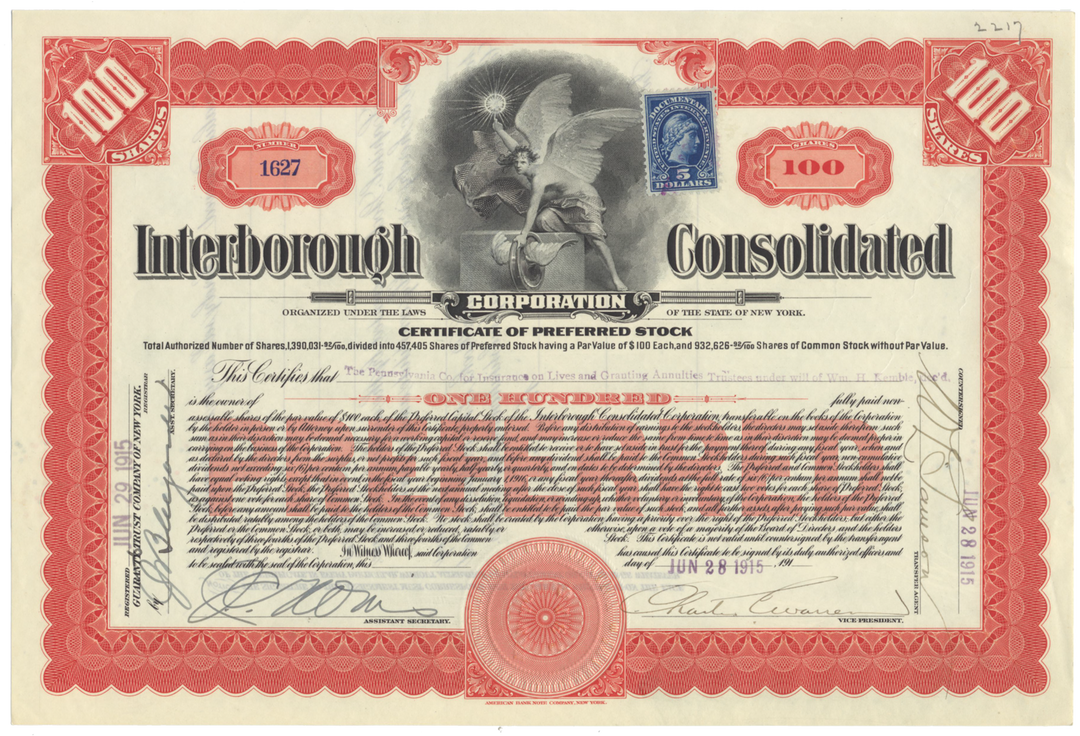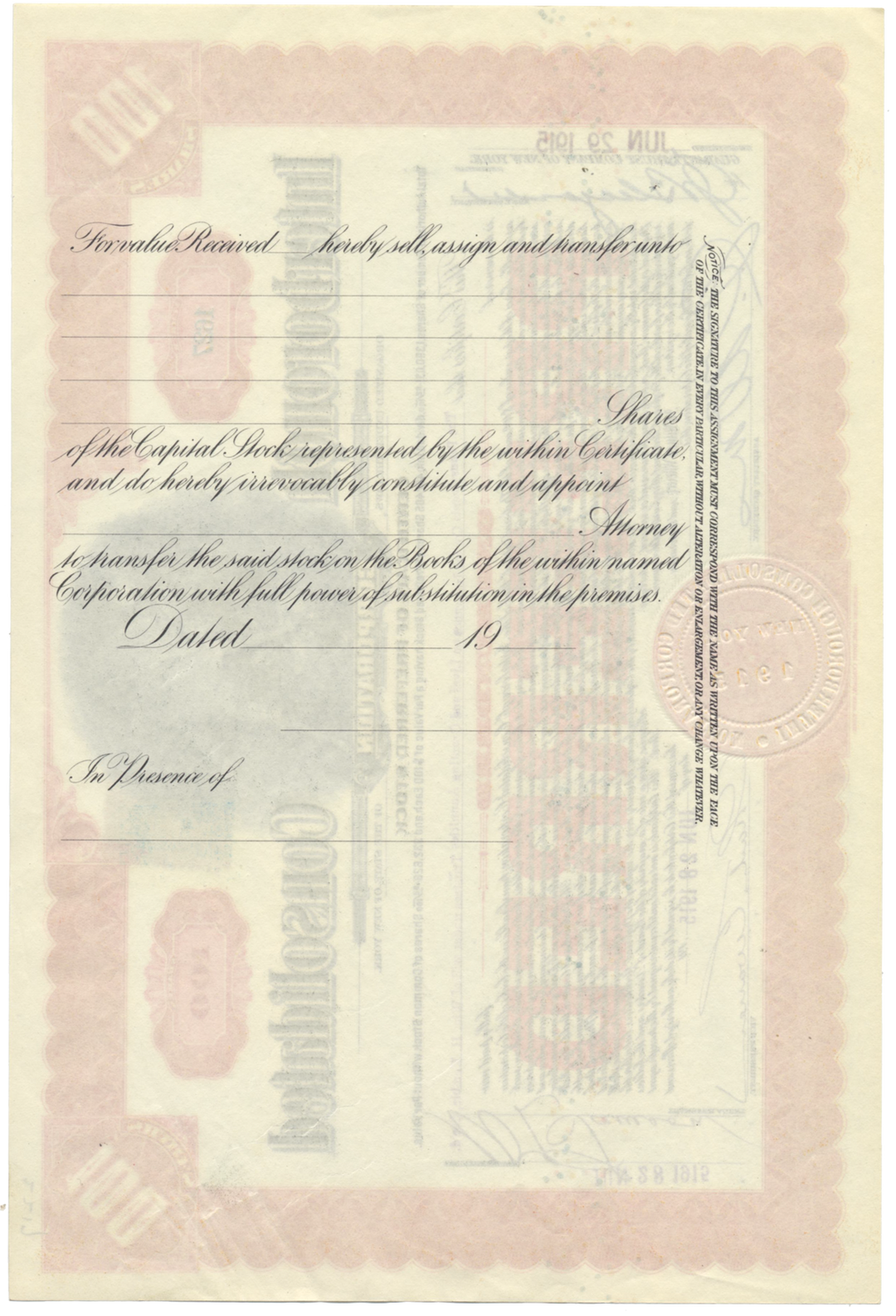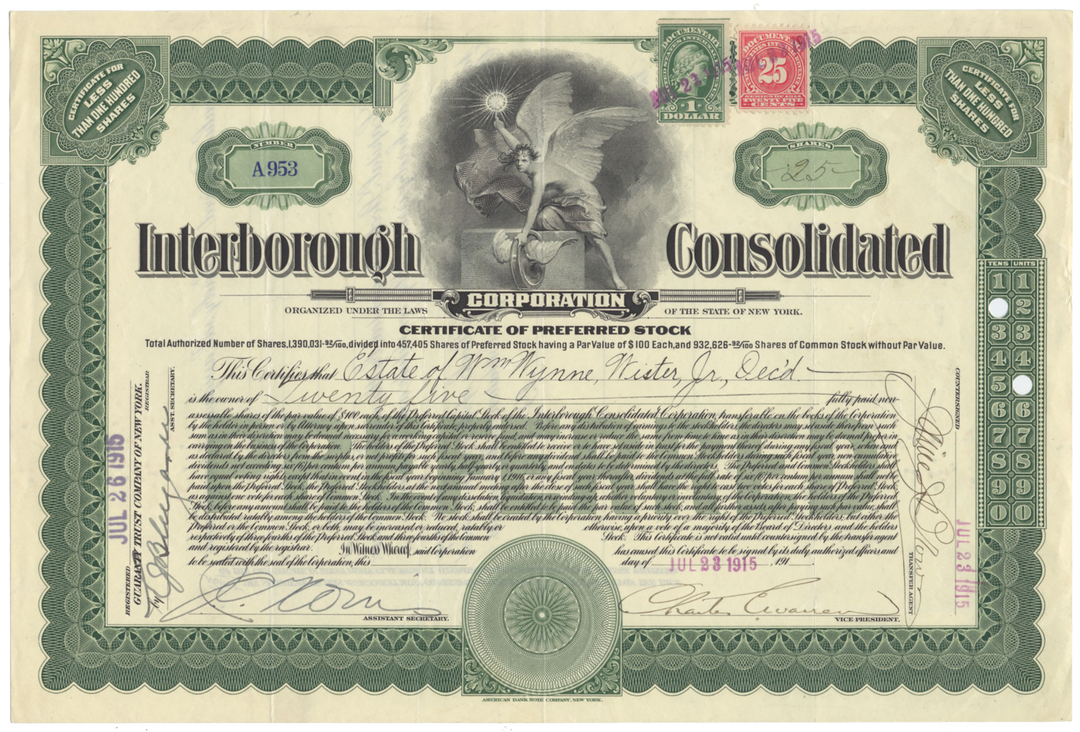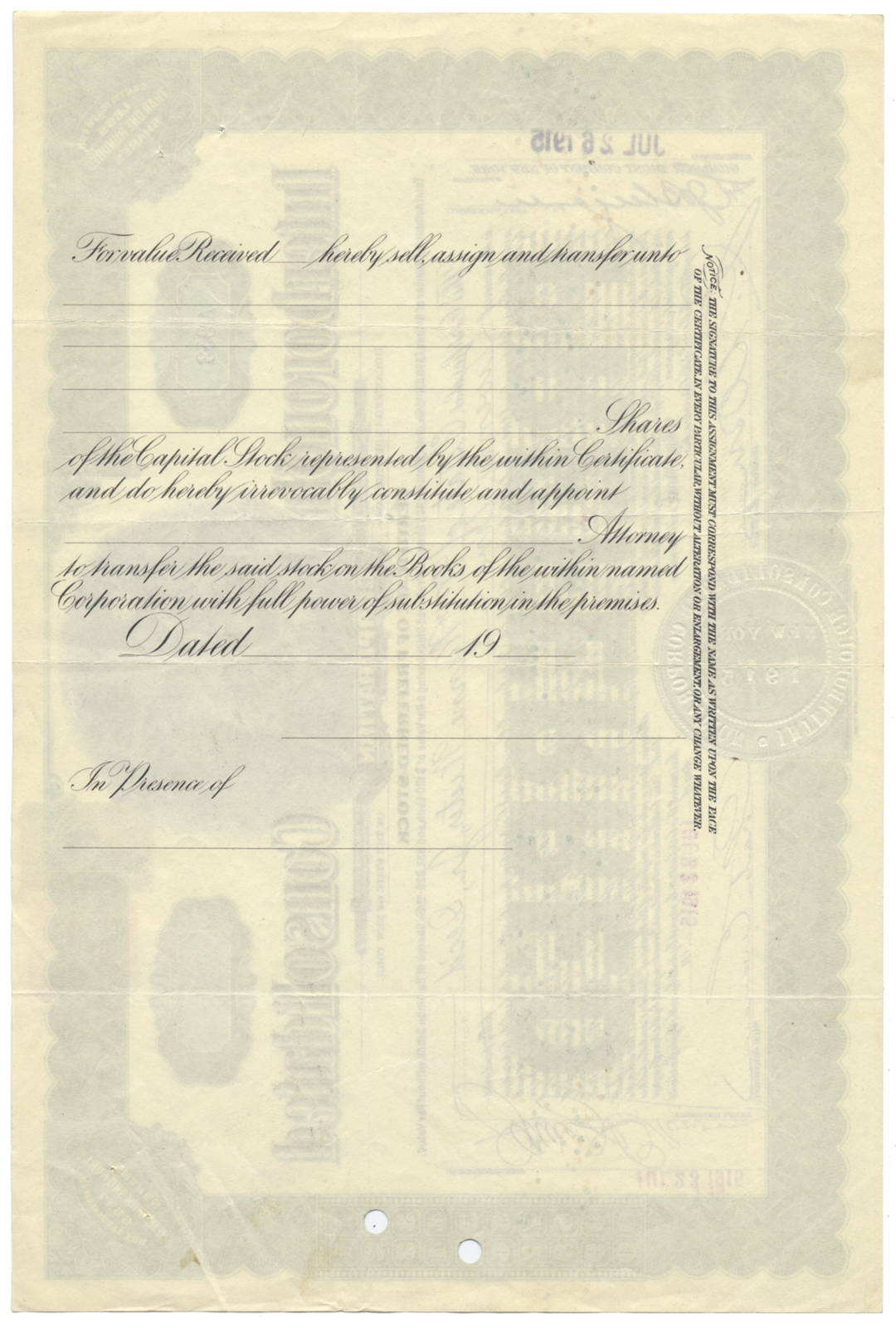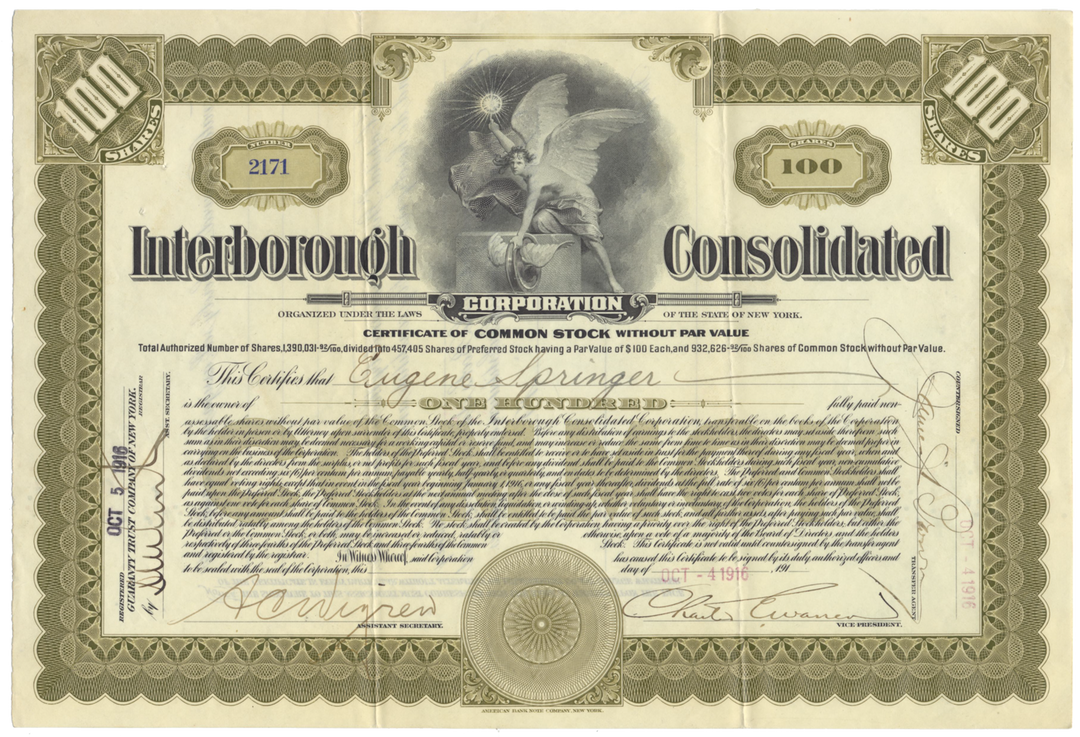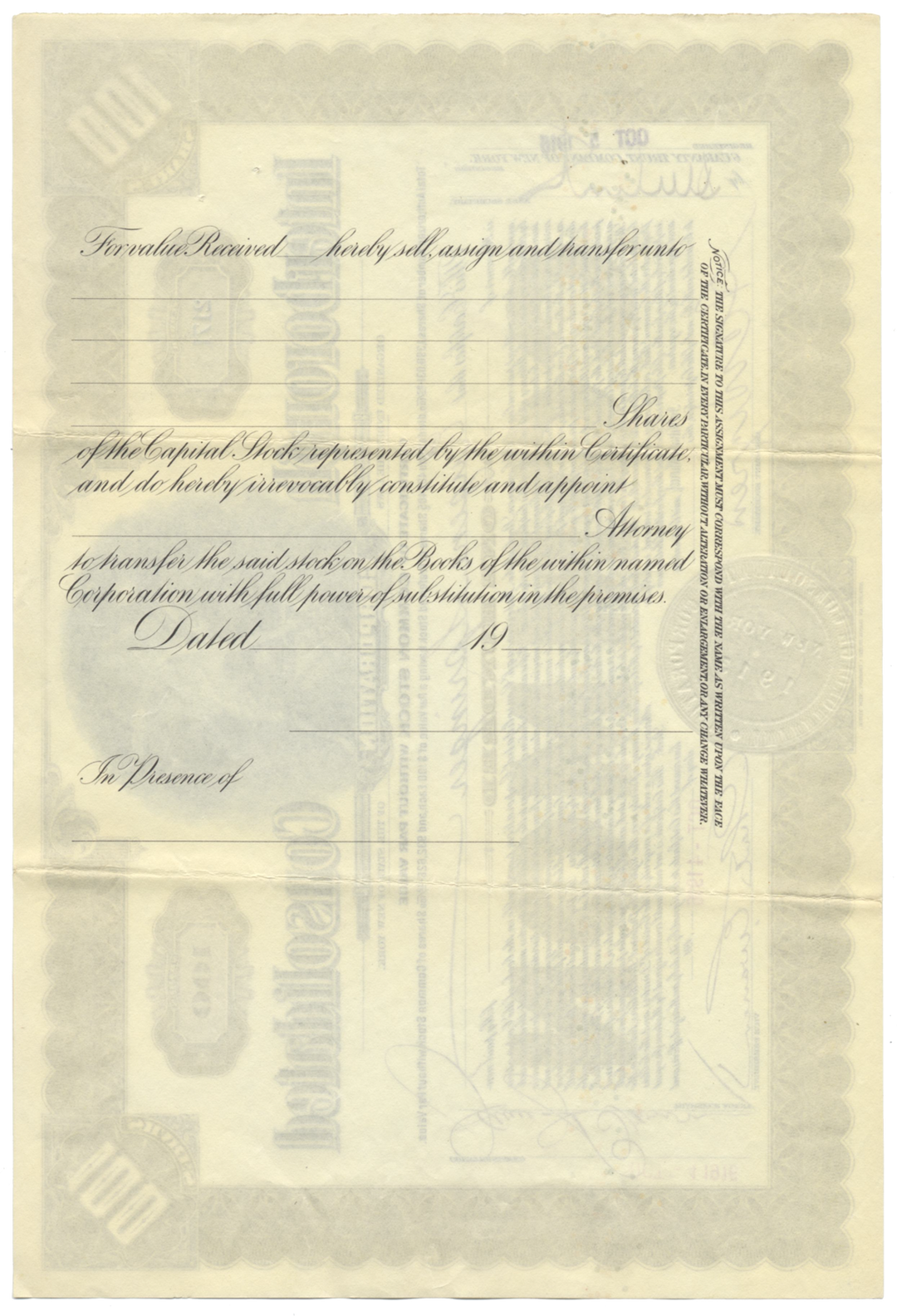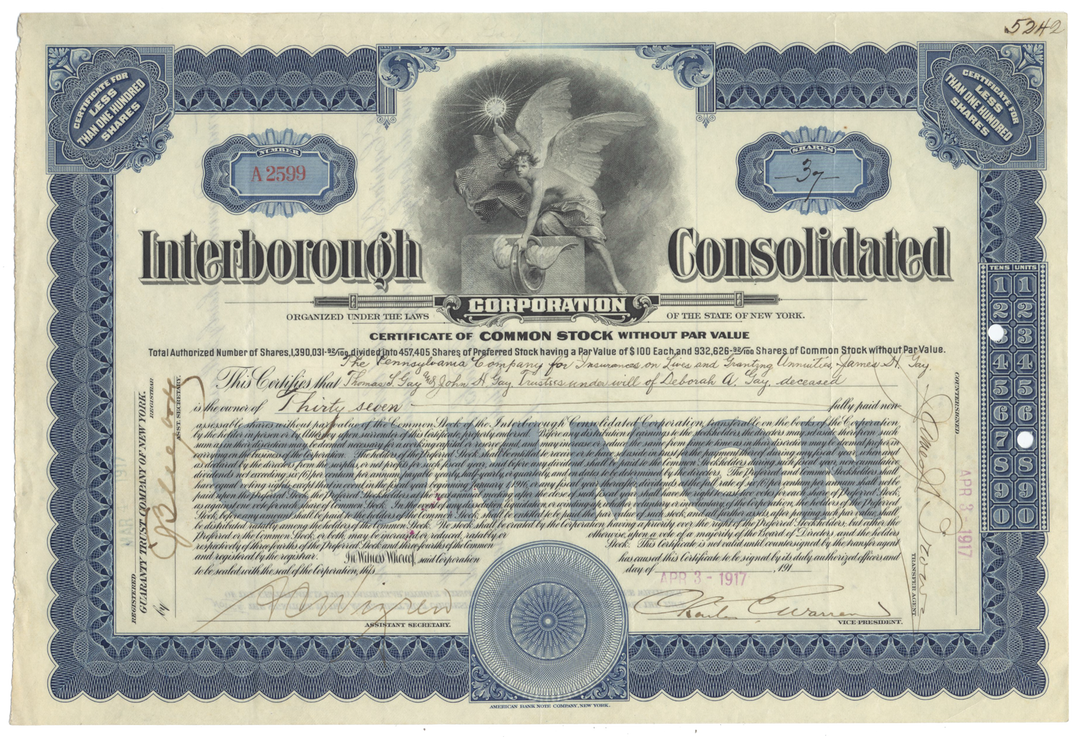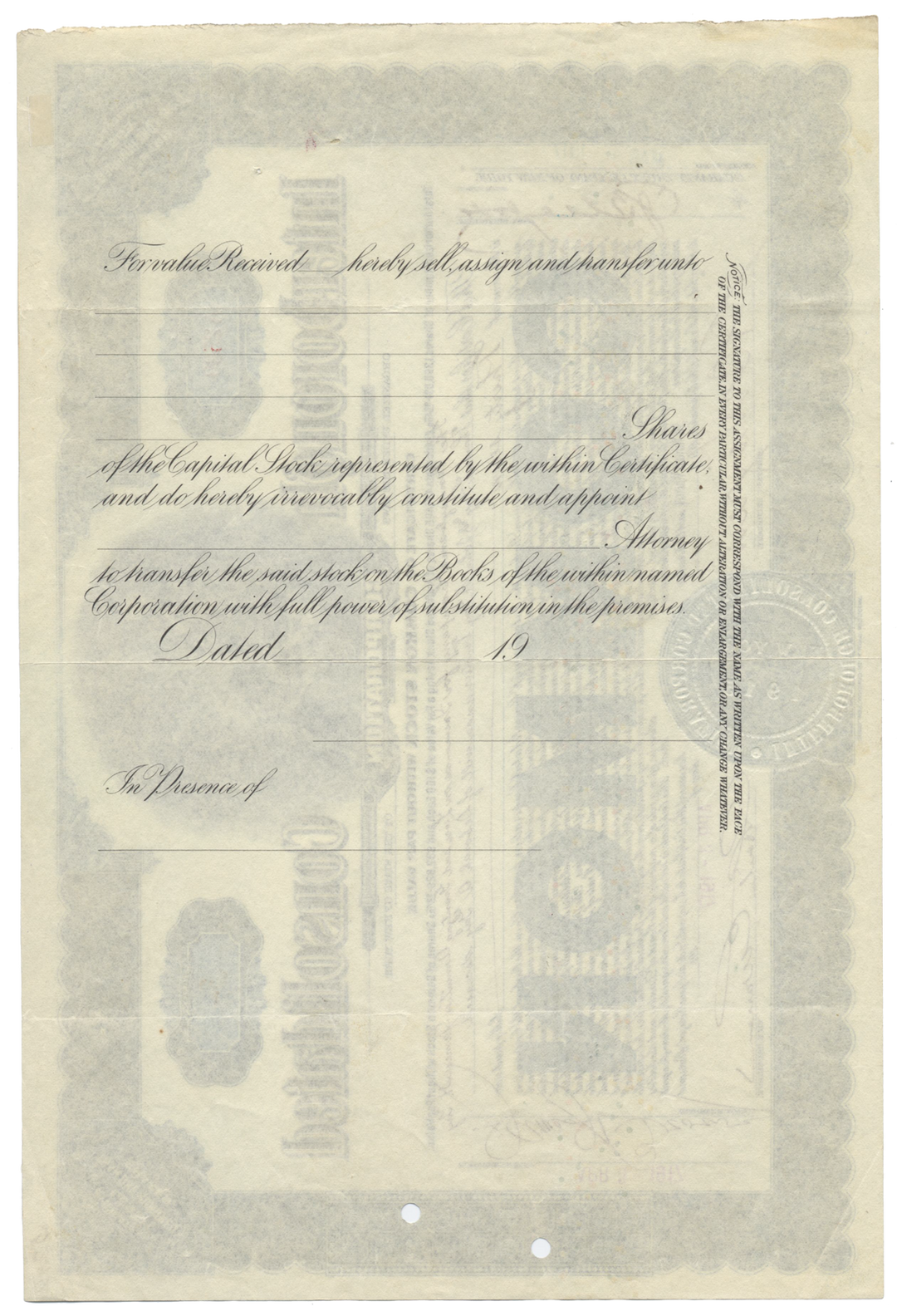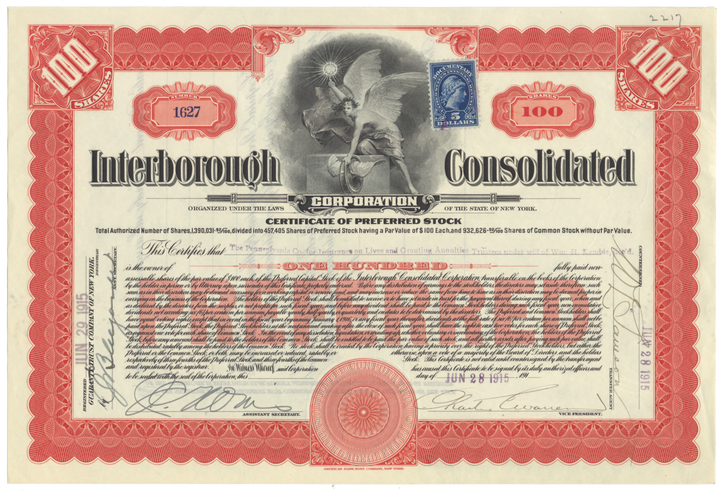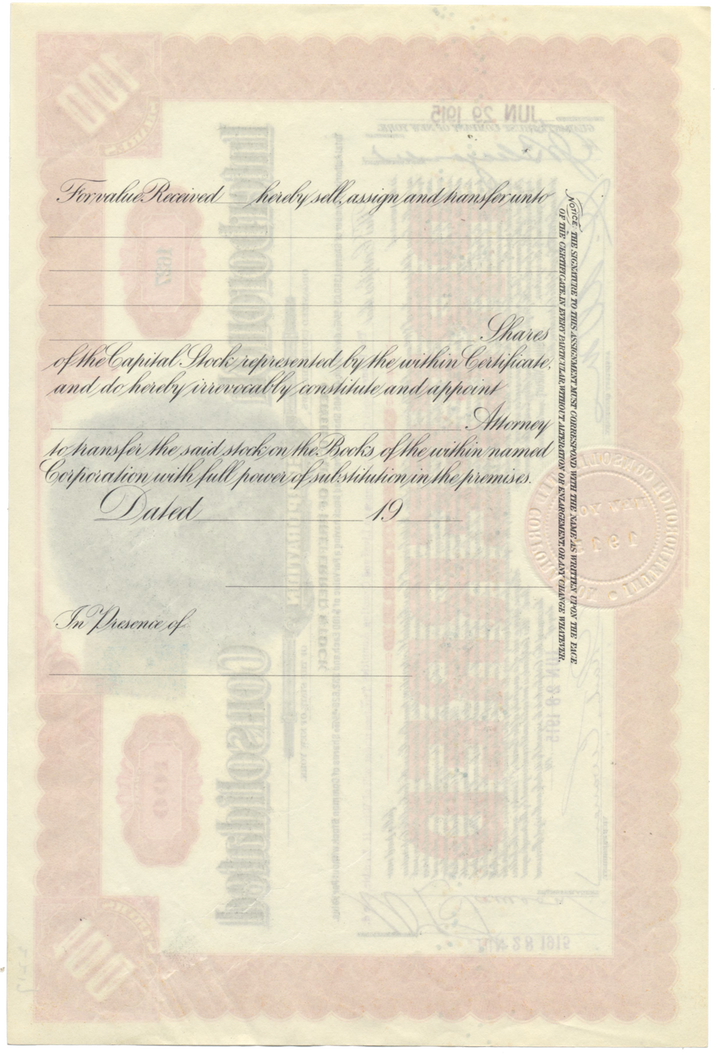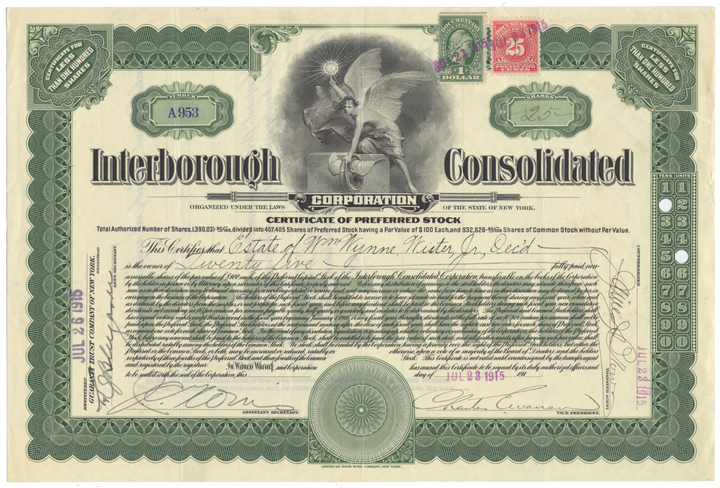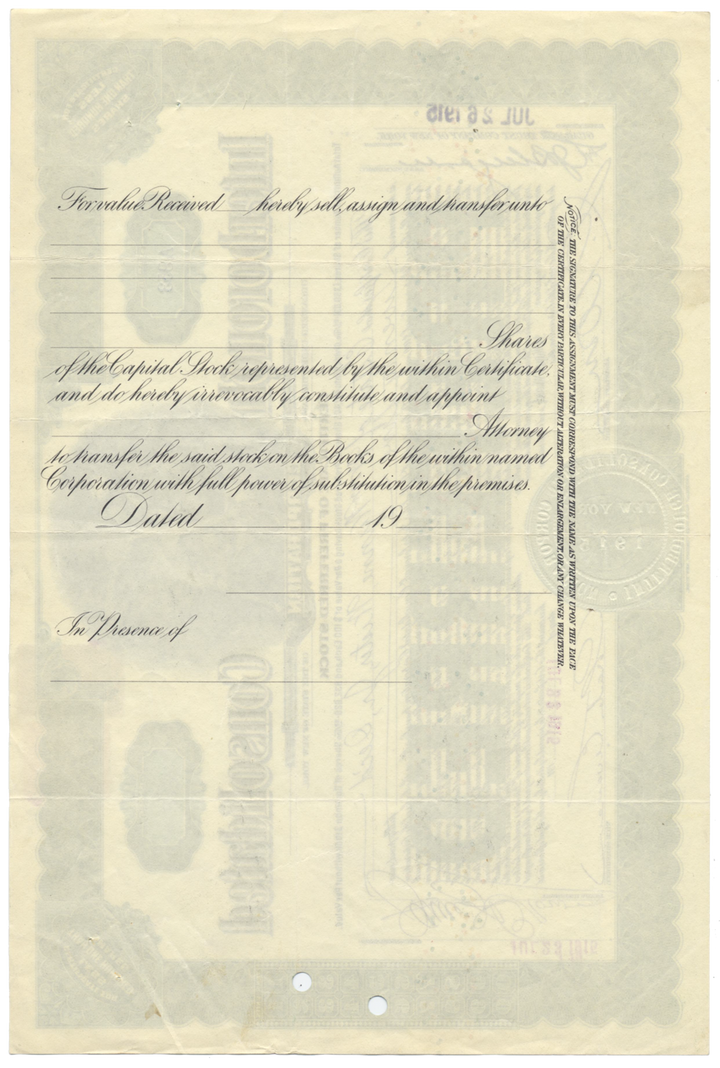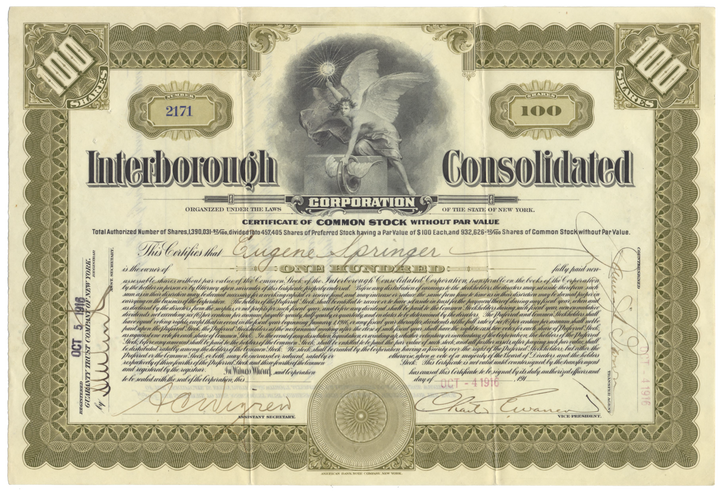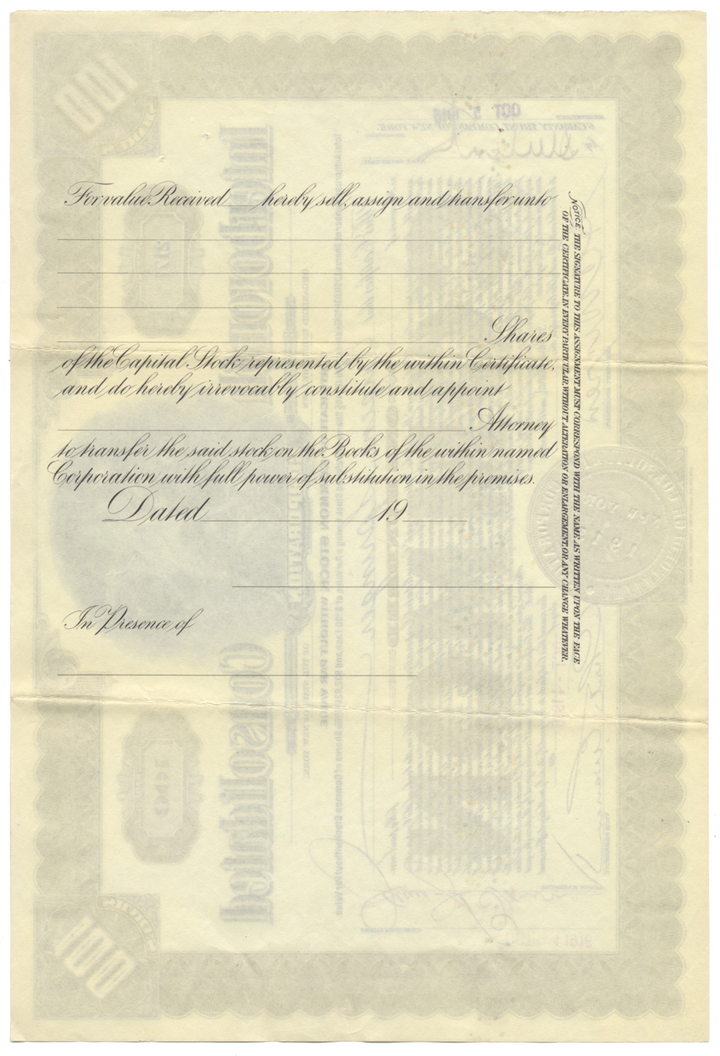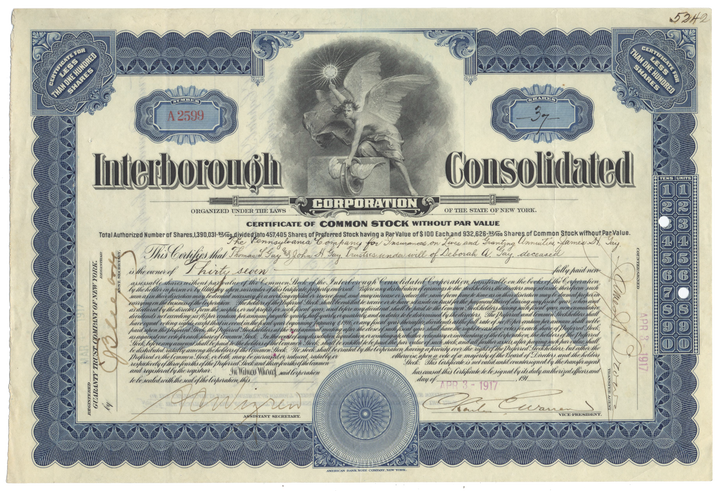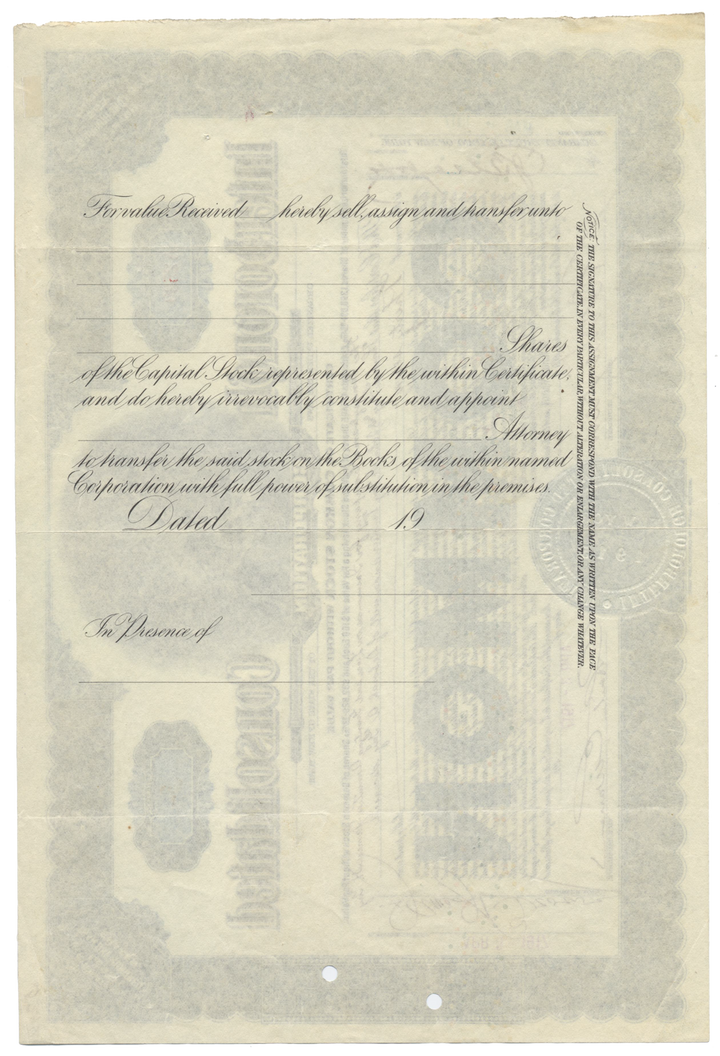Interborough Consolidated Corporation
- Guaranteed authentic document
- Orders over $75 ship FREE to U. S. addresses
Product Details
| Company | Interborough Consolidated Corporation |
| Certificate Type | Common/Preferred Stock |
| Date Issued |
June 28, 1915 (red) July 23, 1915 (green) October 4, 1916 (olive) April 3, 1917 (blue) |
| Canceled | No |
| Printer | American Bank Note Company |
| Signatures | Hand signed |
| Approximate Size |
12" (w) by 8" (h) |
|
Product Images |
Show the exact certificate you will receive |
| Authentic | Yes |
| Additional Details | NA |
Historical Context
In 1906, the New York City community was electrified by the news that the Interborough Rapid Transit Company and the Metropolitan Street Railway Company had merged, and that the two immense transportation systems were hereafter to be controlled by one new company entitled the Interborough-Metropolitan Company. It seemed impossible that the rival traction interests which had been at each other's throats in competition for the new rapid transit lines, should come together. Yet such was the fact, and it was not long until the cat was let out of the bag and the financial district rang with the story of how Thomas F. Ryan had forced August Belmont into the merger by the threat of constructing a new subway to be operated in competition with the underground road into which Belmont had put his millions.
The new company was incorporated as a business, not a railroad corporation, in January 1906, with a capital of $155,000,000, 55 preferred, 100 common. It was to hold the stock of both the Interborough Rapid Transit and the Metropolitan Street Railway companies. Its first directors were: Walter G. Oakman, James Jourdan, John B. McDonald, Morton F. Plant, all of New York, and Peter A. B. Widener, of Philadelphia.
In a conversation with Mr. Belmont in June, 1914, before quoted, he was asked about this merger. "You remember how the street car people talked about building a system of subways and giving transfers to the surface lines", he said. "Well, we couldn't stand that kind of competition, and so we combined with them. I admit that we didn't know the exact condition of the surface car system -- the interlacing of companies etc. It took us some months to get to the bottom of it. I got (Theodore) Shonts to do it. But when we got down to the bottom of things they were worse than we expected. But now there is hope. The old system has been reorganized, improved and put into shape where it ought to develop into a fine property. Everything will work out all right, I think."
In a Legislative investigation of the Public Service Commission, held several years later, namely in 1915-1916, it was brought out that the merger had cost the Interborough interests about $40,000,000. This loss was practically written off in 1915, when the Interborough-Consolidated Company was formed to take over the stock of the Interborough company and the old Metropolitan Securities Company, which held the stock of the surface lines taken in by the merger and later, after going through receiverships, reorganized under the name of the New York Railways Company.
Public resentment followed quickly upon public surprise. The press denounced the merger and the over-capitalization of the new company. The Rapid Transit Commission saw in the merger the collapse of competition, but nevertheless continued the laying out of routes and the preparation of plans for additional subways. In December, 1906, several of these routes had been legalized, plans for some of them made and those for others were under way. Whether to advertise for bids for construction alone, or for both construction and operation was a question on which the Commission asked the advice of the Board of Estimate and Apportionment. This course was made necessary by the Elsberg amendments to the Rapid Transit act, passed by the Legislature of 1906, which not only provided for alternative means of construction, but also limited the life of any lease of a city-owned rapid transit railroad to twenty years, with the privilege of twenty years' renewal. The Board of Estimate and Apportionment on December 7, 1906, adopted a resolution in response to the Commission's request, recommending that alternate bids be invited, first for construction alone, and second for construction, equipment and operation. The routes covered by the resolution were: Seventh and Eighth Avenue route, Lexington Avenue route, Third Avenue route, Jerome Avenue route, Fourth Avenue and Bensonhurst route in Brooklyn, Triborough route, embracing the Third Avenue route, a route over the Manhattan Bridge to Brooklyn and part of the Fourth Avenue route in that borough, and the West Farms and White Plains route.
Related Collections
Additional Information
Certificates carry no value on any of today's financial indexes and no transfer of ownership is implied. All items offered are collectible in nature only. So, you can frame them, but you can't cash them in!
All of our pieces are original - we do not sell reproductions. If you ever find out that one of our pieces is not authentic, you may return it for a full refund of the purchase price and any associated shipping charges.






